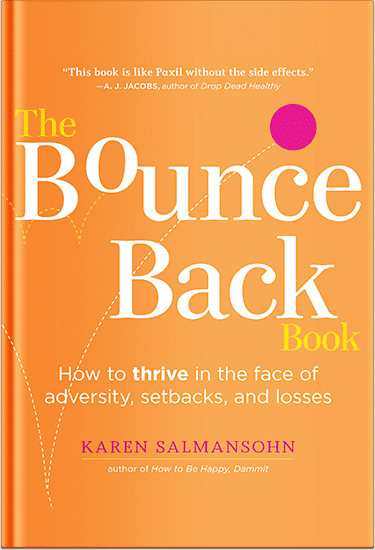 Clothing serves as a silent communicator in romantic relationships, influencing how partners perceive and interact with each other. Psychologists emphasize that the right attire can foster attraction and intimacy by affecting how we feel and behave.
Clothing serves as a silent communicator in romantic relationships, influencing how partners perceive and interact with each other. Psychologists emphasize that the right attire can foster attraction and intimacy by affecting how we feel and behave.
When someone dresses thoughtfully for their partner, it signals care and attention, which strengthens the emotional bond.
Wearing an outfit that makes one feel attractive can boost confidence, leading to more affectionate and positive interactions.
I’m writing this article about how personal style and clothing affects your life because I’m bestselling personal development author and research geek on behavioral change (with 2 million books and course sold).
I’ve spent countless hours studying psychology and the power of small tweaks to create big changes. That’s why I created the Tweak a Week Online Course – to help people make small, positive changes in their habits that lead to big results.
Setting the Scene for Romance with the Right Outfit
Choosing the right outfit for a romantic occasion is crucial in setting the mood and enhancing the connection between partners. The clothes you wear can subtly influence the atmosphere. It can make the evening more memorable and intimate.
When preparing for a romantic dinner, choosing sophisticated attire, like certain dresses NZ, might be the key to creating a memorable and intimate atmosphere. The elegance of the outfit adds to the ambiance, subtly reinforcing the emotional connection between partners.
The right clothing choice doesn’t just impact how you look; it influences how you feel, which directly affects your behavior and interactions during the evening. A well-chosen outfit can make you feel more confident and attractive, enhancing your emotional connection with your partner. The visual appeal of the attire combined with the tactile experience can evoke emotions that deepen the romantic experience, making the evening truly special.
Clothing and Its Influence on Family Perceptions
Family members often interpret our clothing choices through the lens of shared values and cultural expectations, which can influence family dynamics and relationships. Clothing is often seen as an extension of one’s identity and values, making it a crucial factor in how family members relate to each other.
For example: Choosing to dress conservatively for a family gathering may be perceived as a sign of respect, particularly by older generations.
The generational divide in fashion expectations can sometimes lead to misunderstandings or conflicts. Older family members may have specific ideas about what constitutes appropriate attire, while younger members might prefer more contemporary or casual styles. Navigating these differences requires a balance of self-expression and respect for family traditions. Understanding these generational perspectives can help maintain harmony and foster more positive interactions within the family.
Building Emotional Connections Through Shared Fashion Interests
 Fashion can be a powerful tool for building emotional connections within families, particularly through shared interests in clothing and style. This is especially evident in mother-daughter relationships, where fashion often serves as a bonding activity.
Fashion can be a powerful tool for building emotional connections within families, particularly through shared interests in clothing and style. This is especially evident in mother-daughter relationships, where fashion often serves as a bonding activity.
Shopping together, discussing trends, or even borrowing each other’s clothes can strengthen the emotional bond by creating shared experiences and memories.
The mother-daughter dynamic is particularly rich with opportunities for connection through fashion.
For many mothers and daughters, fashion is more than just clothing. It’s a way to communicate, express individuality, and share a common identity. Engaging in fashion-related activities together, such as shopping or choosing outfits, can provide a platform for open communication and mutual understanding, reinforcing the emotional bond.
Fashion can also be a means of passing down traditions and values.
A mother might share her fashion sense, including specific garments or styles that have sentimental value, with her daughter, thus creating a link between generations. These shared experiences not only strengthen the relationship but also help in the development of a shared sense of style and identity.
Additionally, shared fashion interests can be extended to other family members, such as sisters or even fathers, broadening the family connection through a collective appreciation for style. This can turn fashion into a unifying element, bridging gaps and fostering closer relationships within the family unit.
Balancing Personal Style with Family Expectations
Balancing personal style with family expectations can be a delicate task, especially in situations where there are conflicting views on appropriate attire. Family gatherings often come with unspoken dress codes influenced by cultural norms and the expectations of elders. Navigating these expectations while maintaining one’s personal style is essential to avoiding conflicts and ensuring that everyone feels respected.
Conflict resolution in this area often involves finding a middle ground. This might mean incorporating elements of your personal style into more traditional outfits, or choosing attire that respects the occasion while still allowing for self-expression. Open communication with family members about your fashion choices can also help to avoid misunderstandings and ensure that everyone’s feelings and preferences are considered.
One practical approach to balancing personal style with family expectations is to consider the context of the event and the preferences of those in attendance. For example, you might choose to wear a more conservative outfit for a family dinner with elders, while still incorporating elements that reflect your personal taste, such as accessories or a modern twist on a traditional garment.
The Psychological Impact of Dressing Well on Family Dynamics
Dressing well can have a significant psychological impact on both self-esteem and how one is perceived within the family. When you feel confident in your attire, this confidence often translates into more positive interactions with family members.
Feeling good about how you look can improve your mood, enhance your communication, and make you more approachable, all of which contribute to better family dynamics.
Self-esteem plays a crucial role in how we interact with others.
Clothing is a key factor in how we perceive ourselves.
When you dress in a way that makes you feel good, it can boost your self-confidence, which in turn positively affects your relationships with both partners and family members. This is particularly important in family settings, where your attire can influence not just how you feel, but also how others perceive and interact with you.
To ensure that your clothing choices positively impact family dynamics, it’s important to choose outfits that make you feel confident. Plus the outfit must also be appropriate for the occasion.
Here are some practical tips for how to use your personal style and clothing in an uplifting way:
- Select attire that flatters your body type while being mindful of the event’s formality.
- Incorporate traditional elements if you’re attending a family gathering with cultural significance.
- Avoid overly trendy or provocative outfits that might not align with the family’s expectations.
- Invest in versatile pieces that can be styled for various family occasions, ensuring you’re always appropriately dressed while staying true to your personal style.
By carefully considering your clothing choices, you can enhance your self-esteem and foster more positive and harmonious relationships within the family. Dressing well is not just about looking good. It’s about feeling good, which can have a profound impact on how you interact with those closest to you.
If you’re struggling to get started with making small need changes, I offer Mindset Mastery Coaching. Book a free exploratory call here.
Or explore my online program Tweak A Week. This course is designed to make it fun and easy to add in new small tweaks to your habits each week.
Remember, it’s not about making massive changes overnight. But rather, it’s about taking small, consistent steps in the right direction.
P.S. Before you zip off to your next Internet pit stop, check out these 2 game changers below - that could dramatically upscale your life.
1. Check Out My Book On Enjoying A Well-Lived Life: It’s called "Your To Die For Life: How to Maximize Joy and Minimize Regret Before Your Time Runs Out." Think of it as your life’s manual to cranking up the volume on joy, meaning, and connection. Learn more here.
2. Life Review Therapy - What if you could get a clear picture of where you are versus where you want to be, and find out exactly why you’re not there yet? That’s what Life Review Therapy is all about.. If you’re serious about transforming your life, let’s talk. Learn more HERE.
Think happier. Think calmer.
Think about subscribing for free weekly tools here.
No SPAM, ever! Read the Privacy Policy for more information.
One last step!
Please go to your inbox and click the confirmation link we just emailed you so you can start to get your free weekly NotSalmon Happiness Tools! Plus, you’ll immediately receive a chunklette of Karen’s bestselling Bounce Back Book!


 Clothing serves as a silent communicator in romantic relationships, influencing how partners perceive and interact with each other. Psychologists emphasize that the right attire can foster attraction and intimacy by affecting how we feel and behave.
Clothing serves as a silent communicator in romantic relationships, influencing how partners perceive and interact with each other. Psychologists emphasize that the right attire can foster attraction and intimacy by affecting how we feel and behave. Fashion can be a powerful tool for building emotional connections within families, particularly through shared interests in clothing and style. This is especially evident in mother-daughter relationships, where fashion often serves as a bonding activity.
Fashion can be a powerful tool for building emotional connections within families, particularly through shared interests in clothing and style. This is especially evident in mother-daughter relationships, where fashion often serves as a bonding activity.